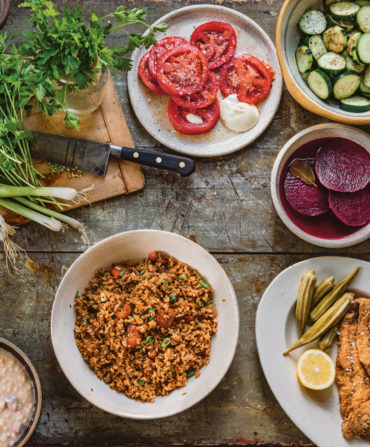Of all the dishes in the Cajun canon, jambalaya is the trickiest. You have to pay attention to it and make some judgment calls as it cooks. Start with room-temperature onions that have not been refrigerated. Your onions cannot be mushy; they need to be fresh and crisp. You’ll know they’re fresh by the tears in your eyes when you dice them. Cook the onions for a long, long time. Caramelize them, then take them past caramelization to a point where they are so dark, you might think you should throw them out and start over. But stay with it. As the onions break down and get darker, they get sweeter and sweeter.
This is how I make the simple shrimp jambalaya I grew up on. If you like, you can add meat to a jambalaya: salt pork, smoked sausage, or andouille. You can make jambalaya with oysters and crabmeat and crawfish. You can make a duck confit jambalaya; you can save leftover chicken and make a chicken-and-sausage jambalaya. Use this recipe as a base to create your own. —Melissa M. Martin









